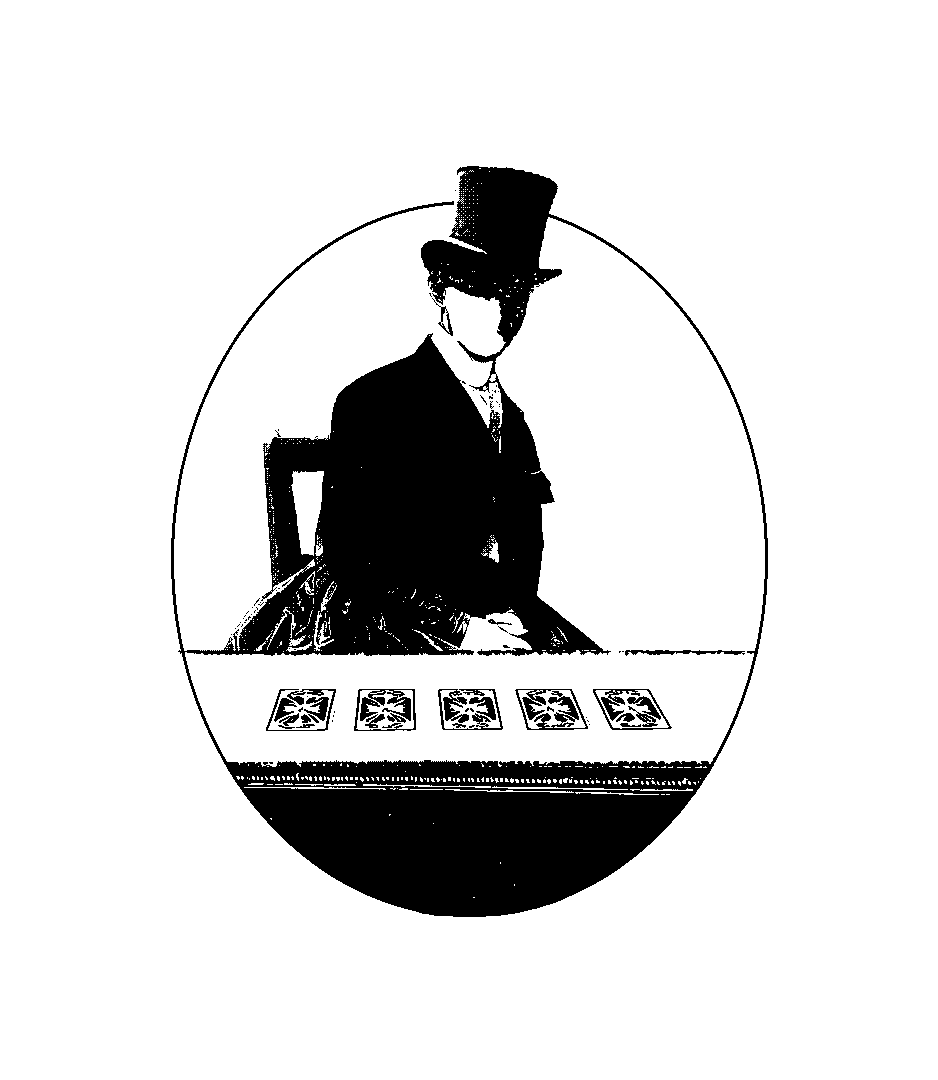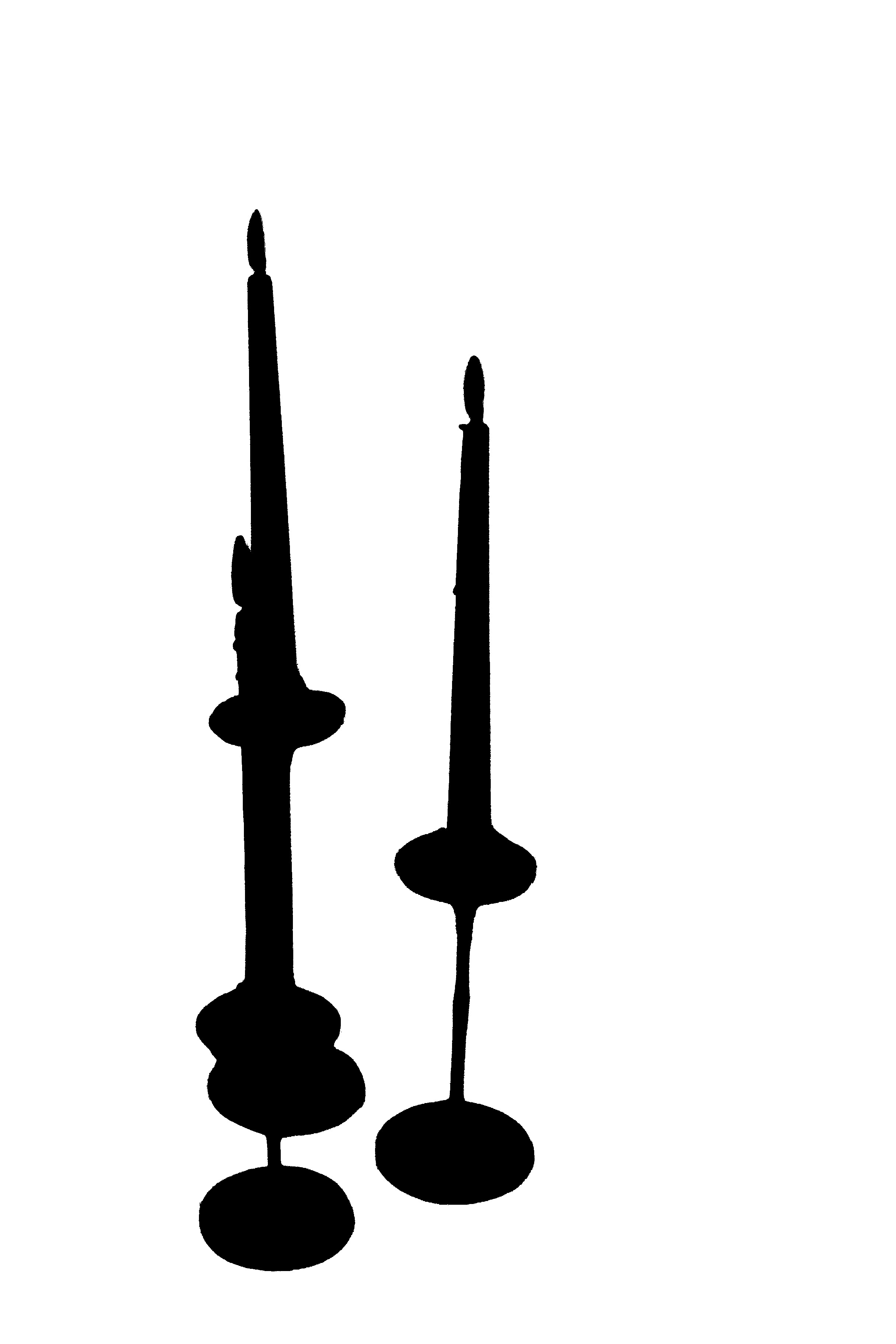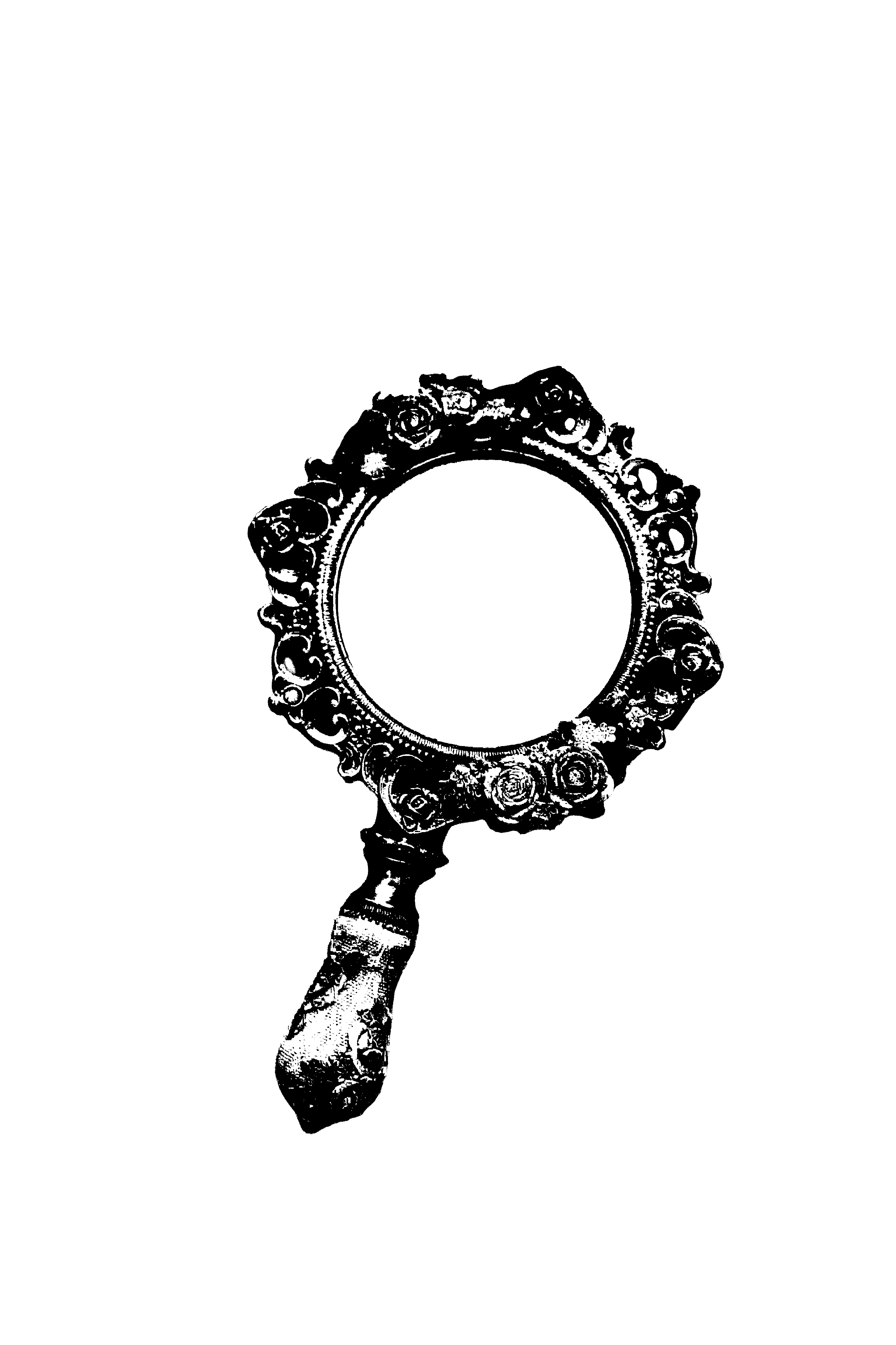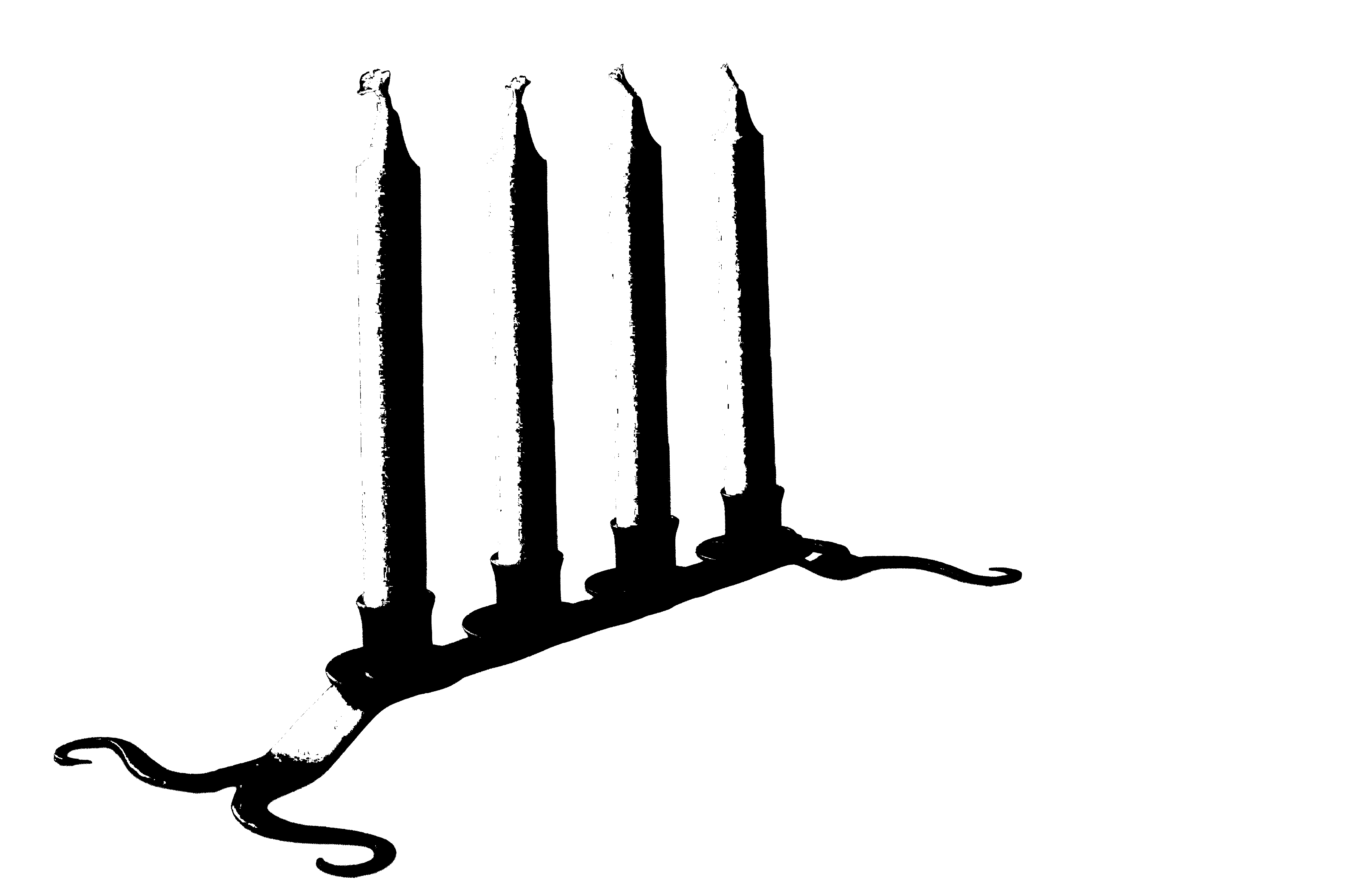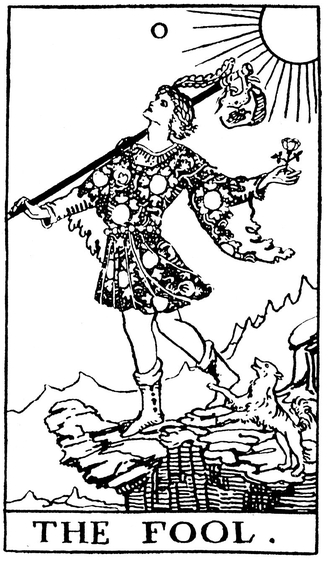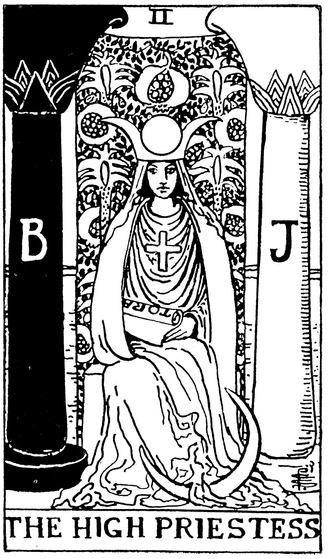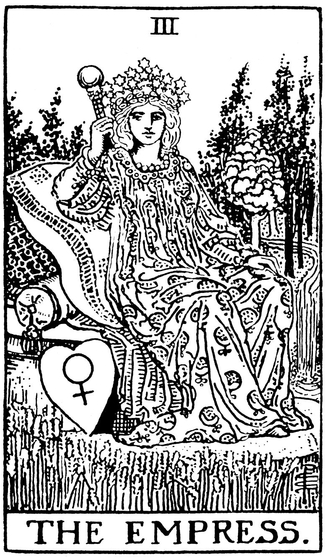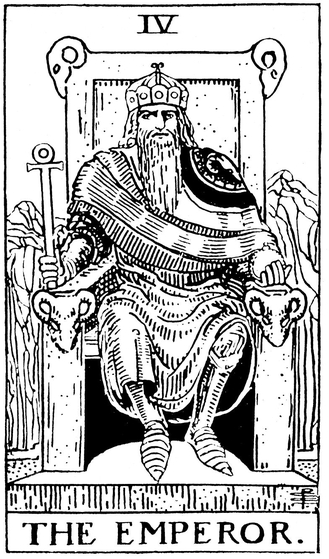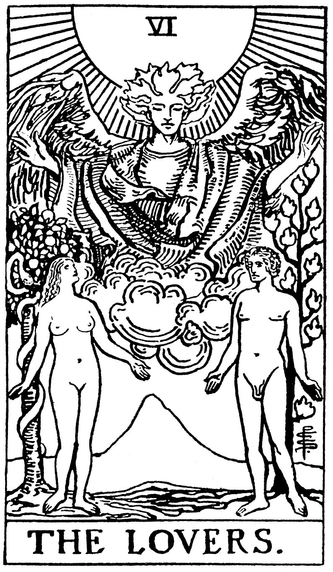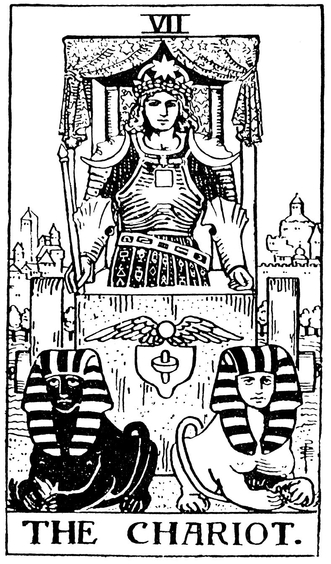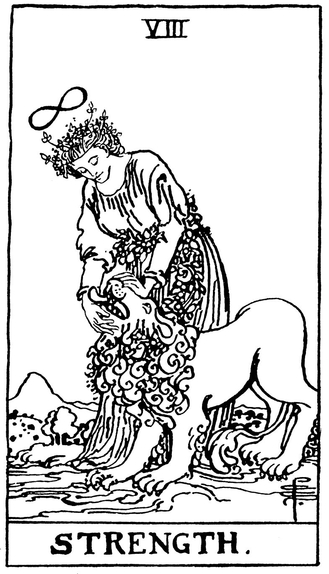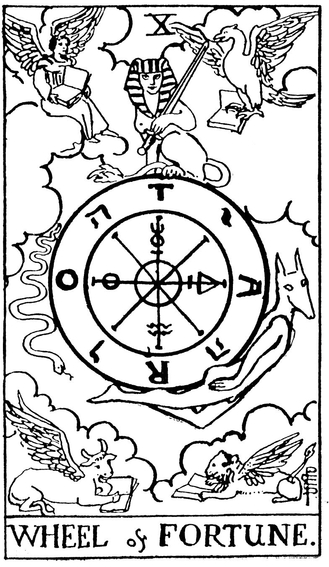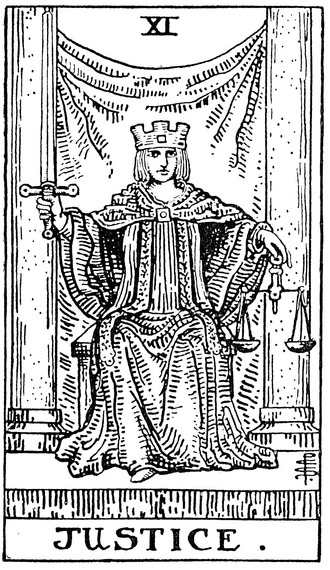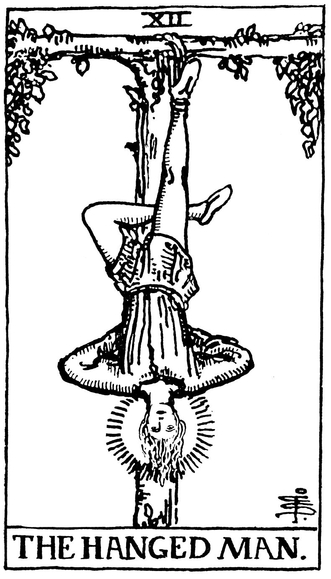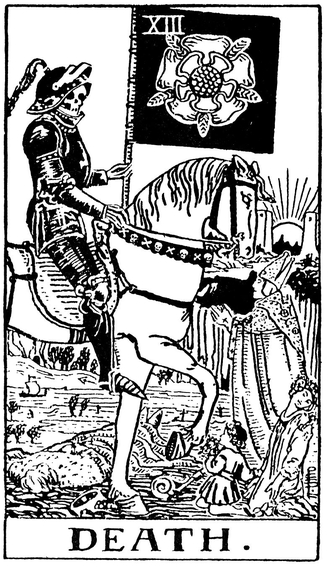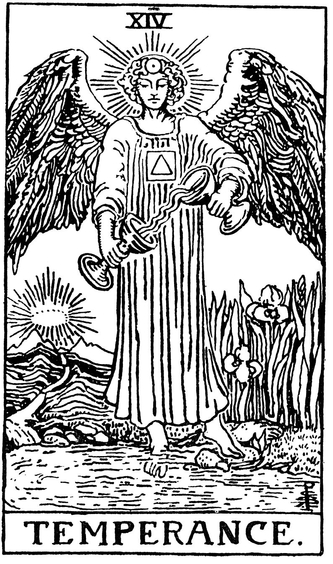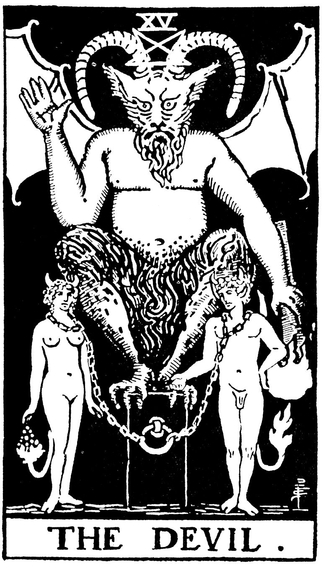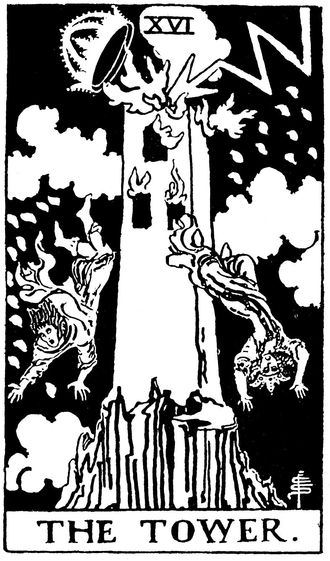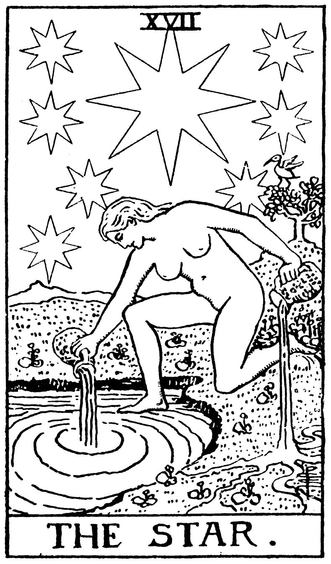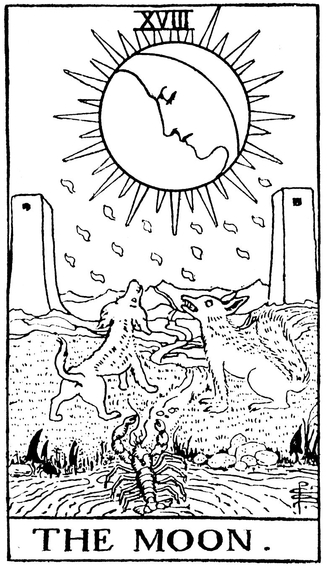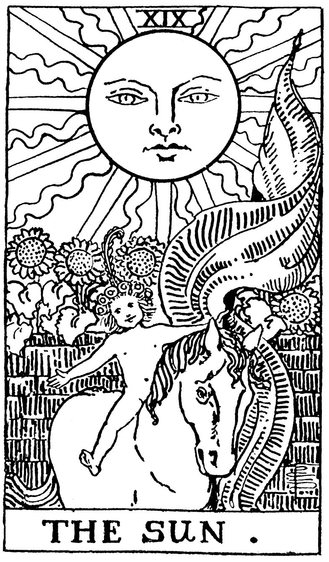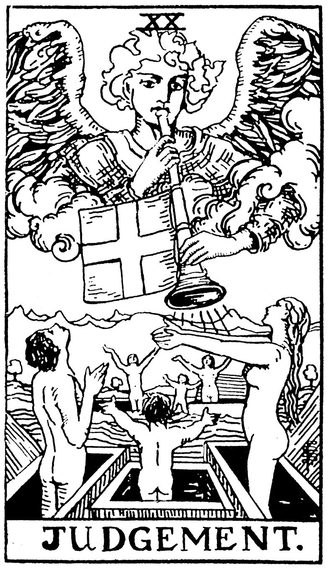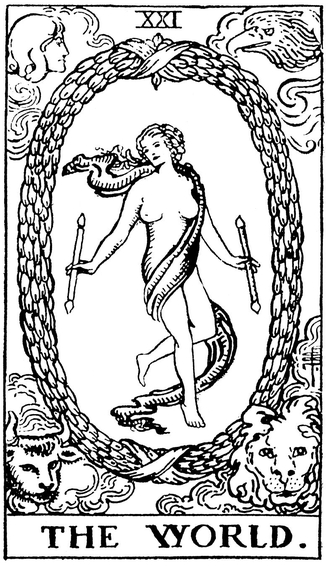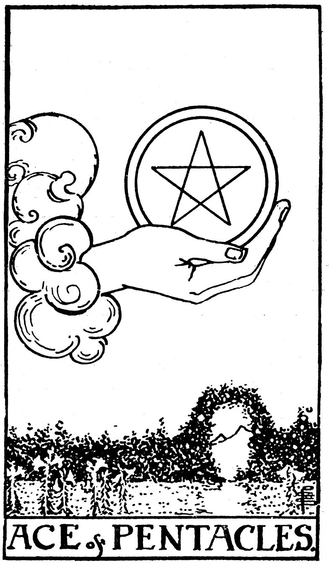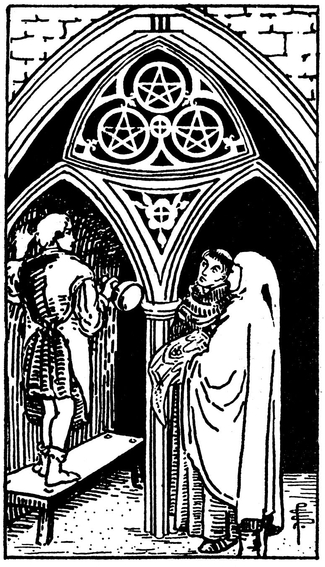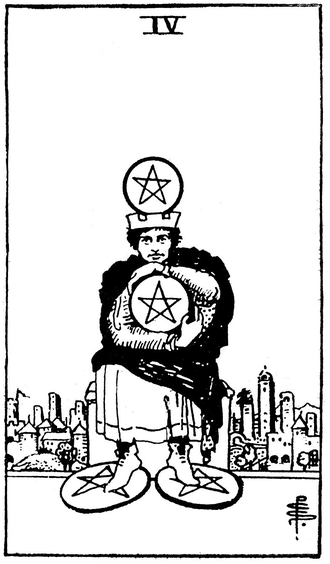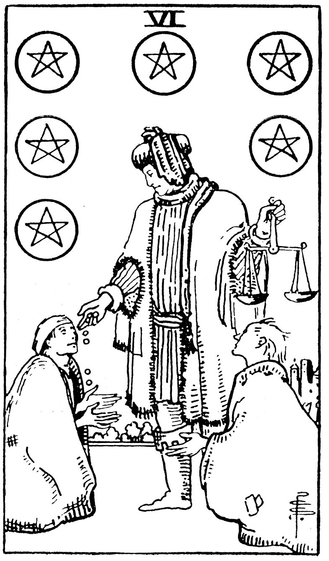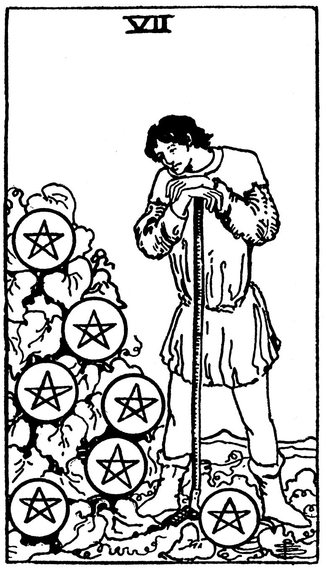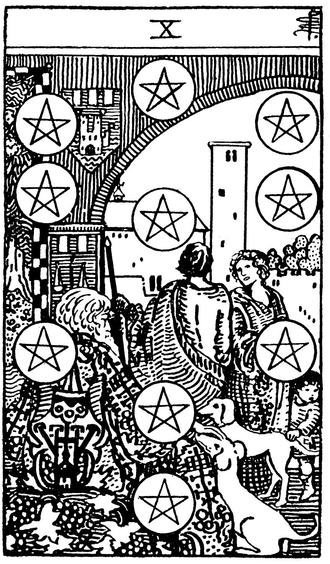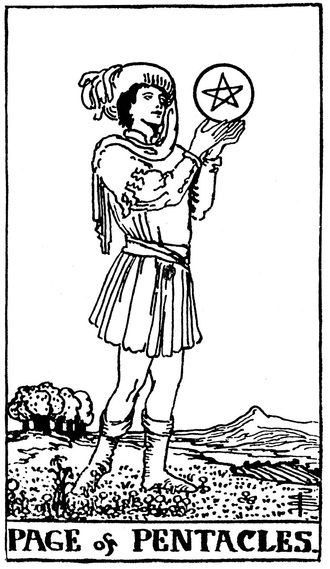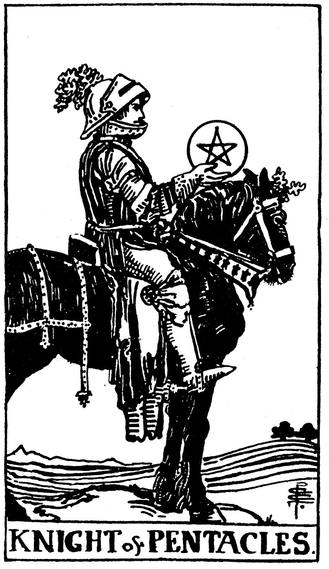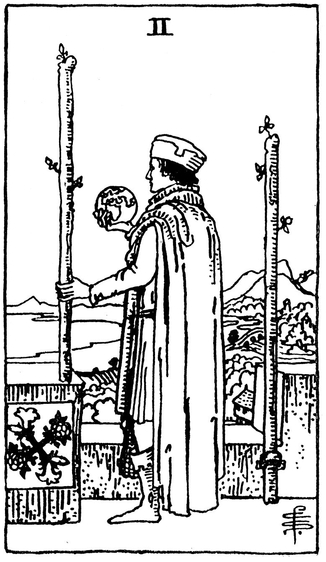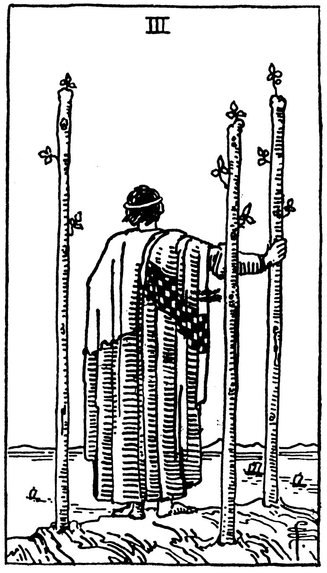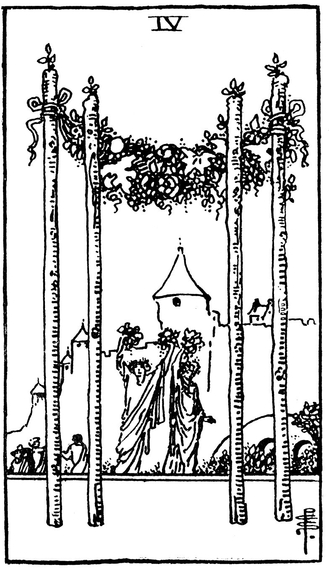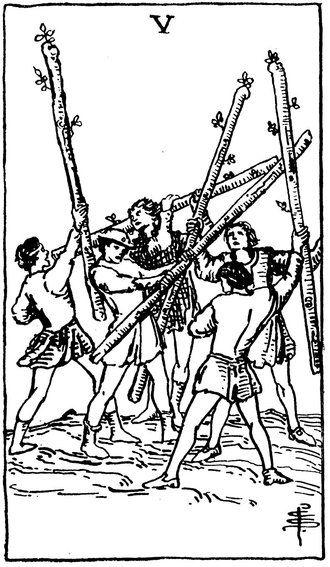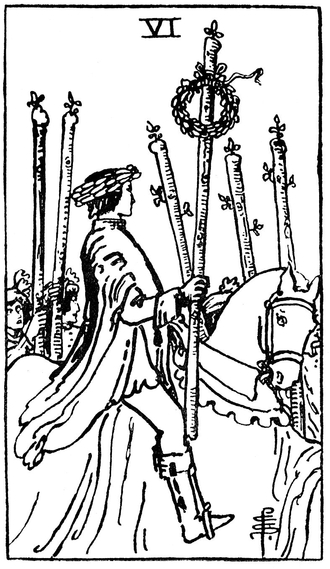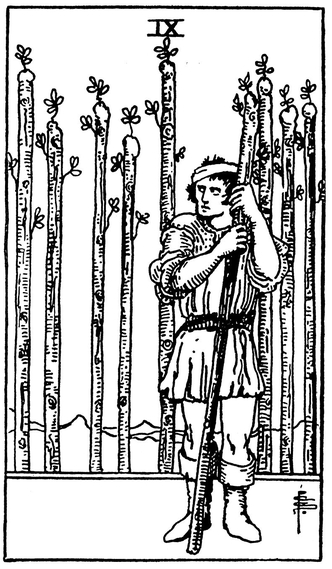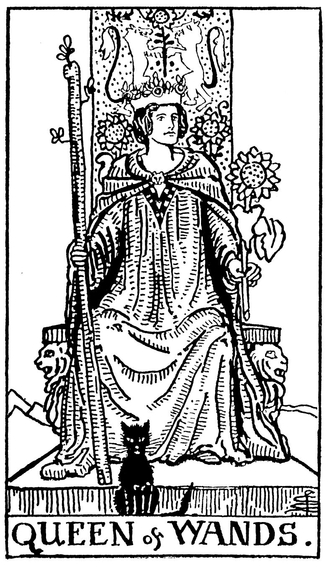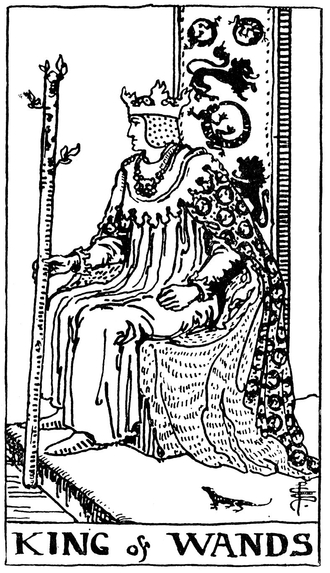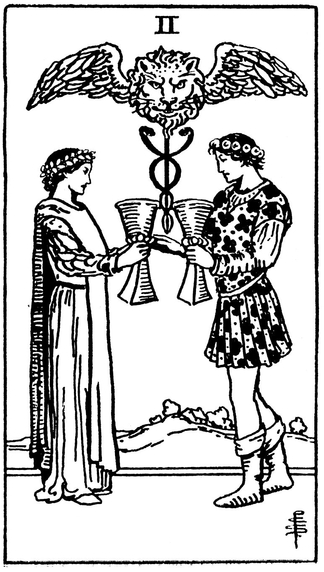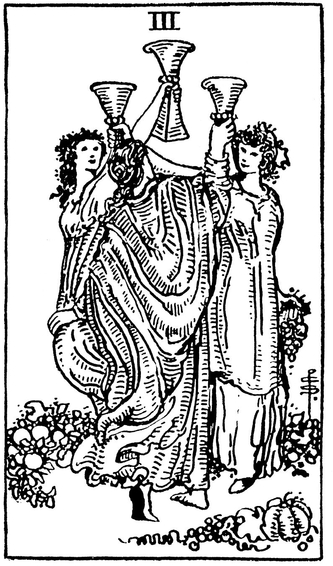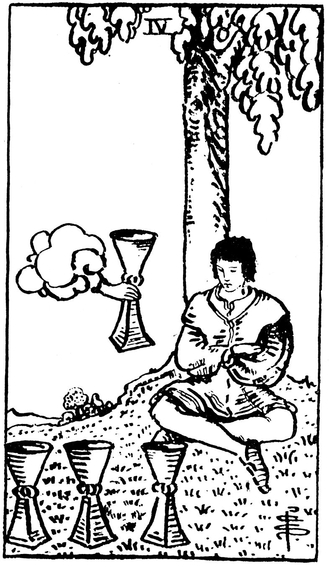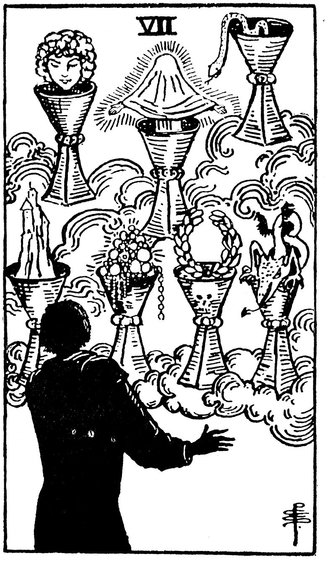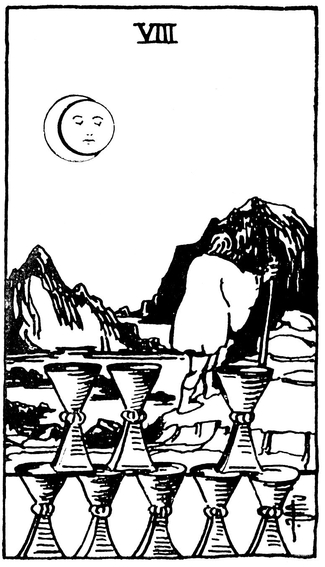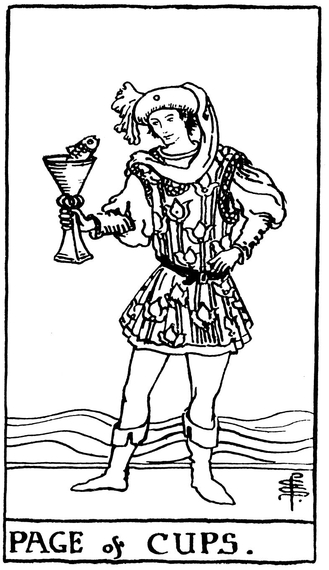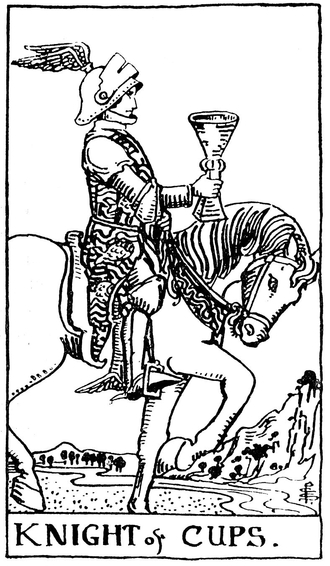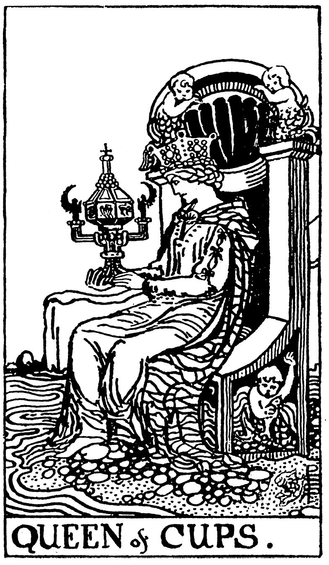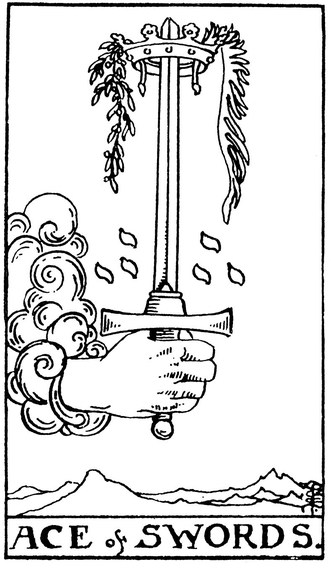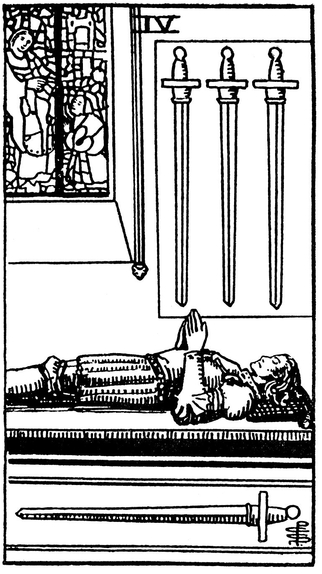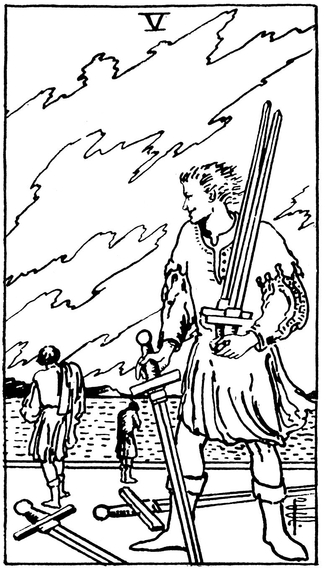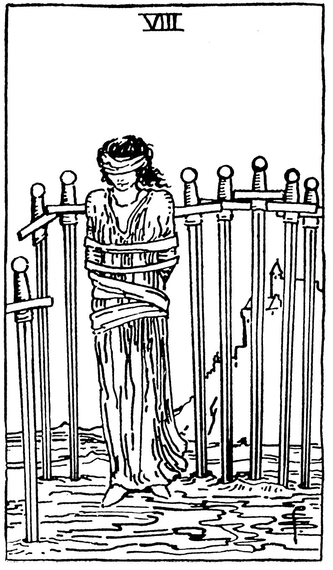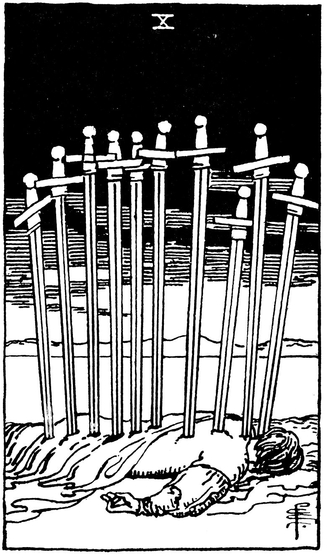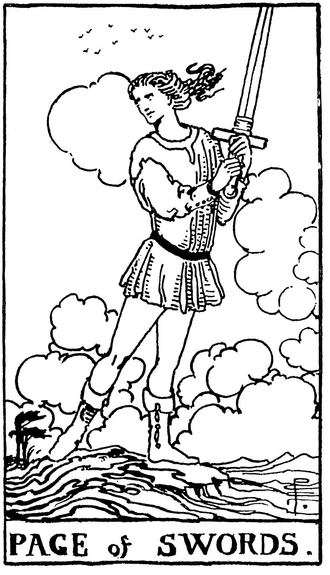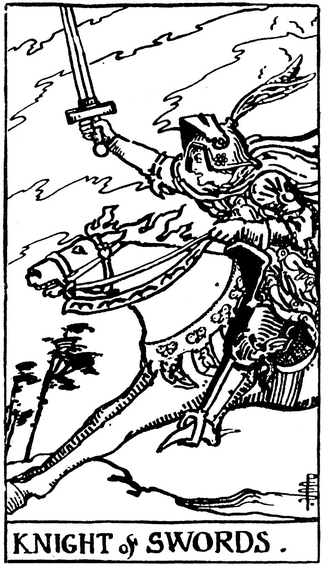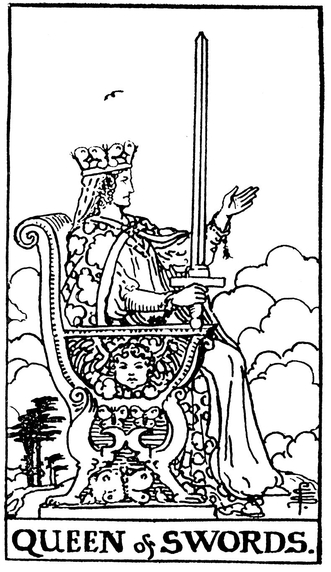A deck of Tarot cards contains 78 cards. These can be divided into two parts.
The first part is called the major suit. It consists of 22 cards with elaborate
illustrations. The major suit cards are numbered consecutively, and have a
specific name for each one.
The remaining 56 cards are further divided into four suits. These are called
the minor suits, and have a simpler design than the 22 majors. Each minor suit
consists of 14 cards: one ace card, nine number cards (numbered 2 to 10), and
four court cards: page, knight, queen and king.
Each reader has his own favorite way of shuffling, and no single way fits all.
My way of doing it is to take the cards out of their box, and to shuffle them
gently face-down while I listen to the querent's story. Then I hand the cards
to the querent, still face-down, and ask him to shuffle the cards himself. Once
this is done, the querent returns the cards to me still face-down. One by one
I take the first cards from the back of the deck ( that is, from the top side
of the face-down pack), and arrange them on the table in the spread layout.
Identifying the Cards
To identify the different cards, you can either look at their images on the
cbdtarot.com website, or use the following guidelines:
Major suit: The illustrations are rich in symbolic detail. Each card carries
a title and a Roman numeral (in long notation, so that 9 is VIIII and not IX).
Two exceptions are card number 13 with no title, and The Fool card with no number.
English names for the major suit cards are listed in the quick interpretations section.
Minor suits: Each minor suit is linked with a symbolic object which appears
on all its cards. The objects are: coins, wands, cups, and swords.
The coins are depicted as decorated circles. The cups are goblets with hexagonal
bases. The coins and the cups are colored yellow with small areas in red.
The wands are depicted either as green clubs, or as straight rods. The swords are
either regular (straight) swords with red or light blue blades, or rounded arches.
The rod-shaped wands and the rounded swords appear only in the number cards. They
are shown as narrow stripes in red, light blue and black, with blades at both tips. The
wands stripes are straight and cross over at the middle of the card. The swords stripes
are rounded and cross over at two points - at the top of the card and at the bottom.
The ace card of each minor suit shows a big and detailed image of the suit symbol,
with no title or number.
The four court cards carry titles identifying their ranks: a page ( titled VALET),
a knight (CAVALIER), a queen (REYNE), and a king (ROY). The titles also indicate the
suit: coins (DENIERS), wands (BATON), cups (COUPE), swords (EPEE).
Each number card shows the corresponding number of suit symbol icons, geometrically
arranged and usually with floral decorations around. The number cards of three suits,
excepting the Coins, also have their numbers written on both sides.
Reading the Cards
For almost all the types of queries, you can use a basic spread of three cards out of the 22 of the major suit.
After shuffling the deck, the three cards are laid dmvn in a row from left to right, and then read as a story
which usually advances in this direction.
At a later stage, when you get to know them better, you may want to add the minor suit cards. This can be
done gradually: first the aces, then the court cards, and finally the number cards which are the most challenging
to study in detail.
To use the minor cards in a reading, you can extend the basic spread to a row with 7 cards, again from left to
right.
An alternative method is to use the minor cards as a background layer for the basic 3-card spread. To do this,
you start with the first (left) position and pile the minor cards on top of each other as they appear out of the
shuffled deck. You go on covering each card with the next one until a major card shows up. Then you pass to
the second (center) position and do the same, and then to the third (right) position. Finally, you see 3 major
cards that you read as a basic spread. Under each one of these major cards there is a pile of minor cards. These
are read as background or additional information for the major card which covers them.
